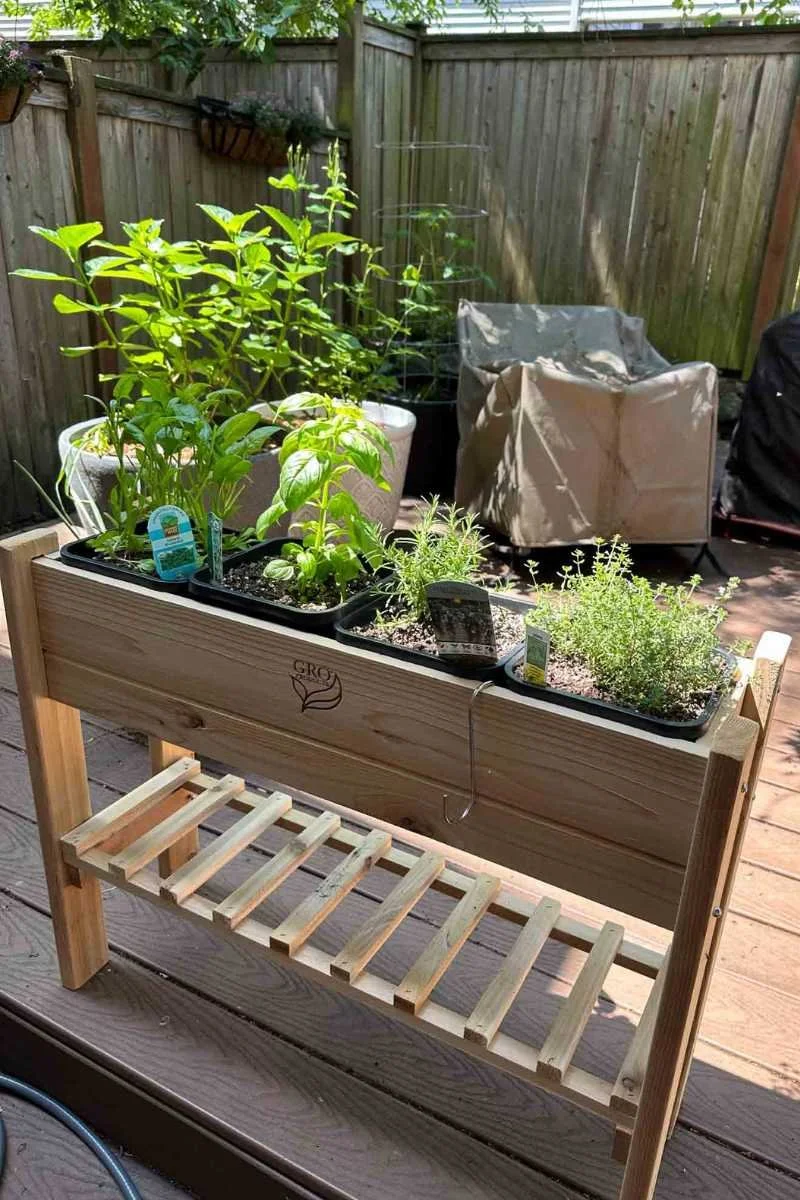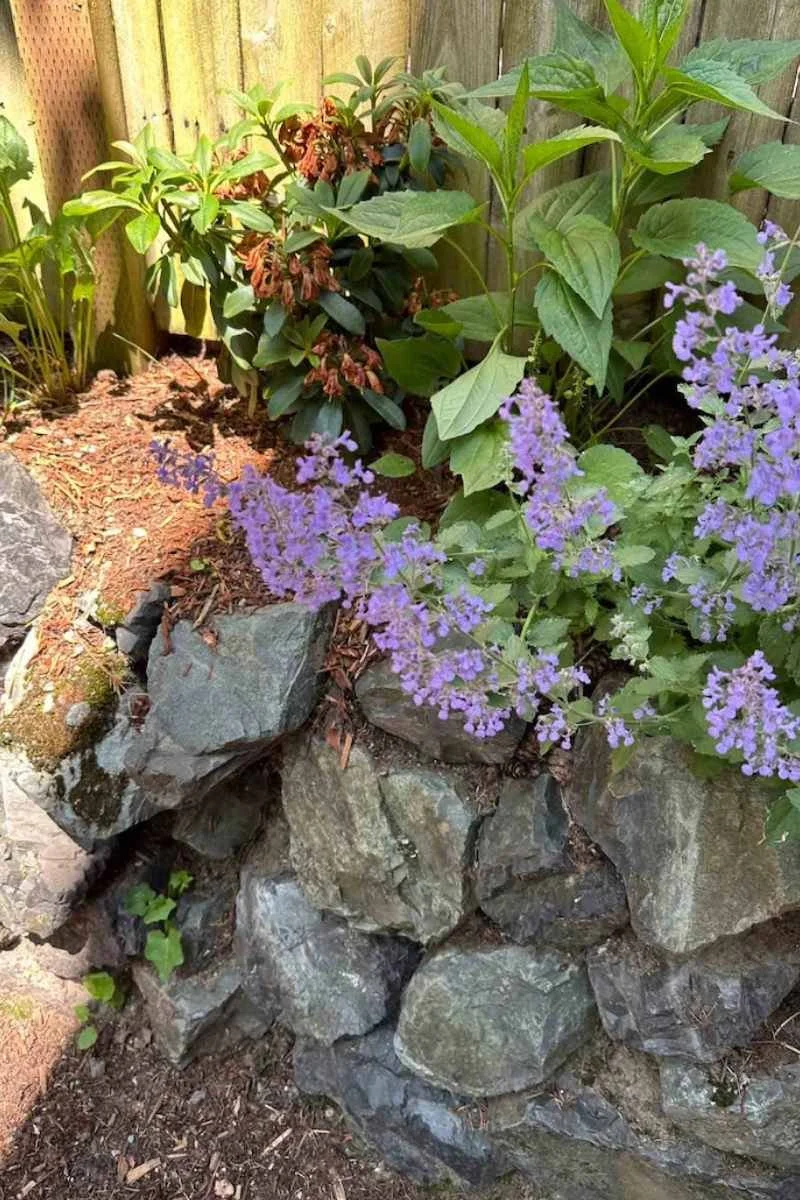11 Sustainable Tips for Creating an Eco Backyard Garden
A garden can be a special escape to connect with nature.
Green spaces have been shown to improve mental health, and when it comes to living an eco-friendly, sustainable life, a garden is a great way of keeping you on the green path.
However, we have to be mindful when gardening.
Certain practices can be harmful to the environment such as wasting water, using too many chemicals, or growing the wrong things at the wrong time.
This guide will explore some thoughtful tips to creating a more sustainable garden and green space!
My Top Tips for an Eco-Conscious Backyard Garden
Get started planting in your backyard with these eco-friendly tips and tricks!
Plant Seasonally
Plants adapt to thrive in certain seasons, so it’s important to plant fruit, vegetables, flowers, and so forth accordingly.
Furthermore, rotating your plants by growing different plants according to the season keeps the soil nutrient-rich and disrupts the life cycle of pests.
Use Natural Pest Control
Healthy soil is key to healthy plants, which is why organic farming avoids pesticides. But pests are an inevitably, whether you’re on a farm or in a garden. However, there are natural and gentler ways you can manage them.
I plant lavender, rosemary, and marigolds in my garden to act as natural pest repellents due to their smell – which is pleasant to us, but not to pesky bugs.
Marigolds have the added benefit of attracting slugs, which can deter them from other plants, and makes it easier for you to find and remove them.
Aphids are some of the peskiest pests, and if your companion plants are not deterring them, it’s time to bring out the spray bottle.
But instead of a chemical-laden pesticide, create a natural version by mixing vinegar and water and spraying it onto your plants . Just don’t overdo it, as it can adversely affect the plant and alter the soil.
For more natural pest control ideas read our guide!
Attract Pollinators
Planting flowers does more than just act as a pest deterrent. They’re pretty too! But most importantly, flowers attract beneficial insects like butterflies and bees.
can you spot the bee?
Both are pollinators, as are birds – who can also control pests. Invite birds into the garden by adding a bird feeder.
Buy or build one – this can be as simple as stringing half an (emptied) orange peel, filling it with seeds, and hanging it in a tree. A bird bath is also a great addition. I love peeking out my window to watch the birds splashing in the water.
Pollinators are important, because pollination is an ecological function that is vital to life on Earth.
Pollinators like butterflies, birds, bees, beetles, and bats deposit pollen between flowers, which the plant uses to produce fruit or seeds. Without pollination, plants would die out and food sources would dwindle and disappear.
Grow Herbs & food to reduce plastic
Growing food, especially herbs, is a great way to cut down on plastic. If you can pick your own, it means you can stop buying them in plastic in the store, helping reduce single-use plastic and plastic waste.
What’s more, growing your own herbs allows you to use only as much as you need. When you buy from the store, you’re often left with more than you need, and it just ends up in the trash, adding to the food waste problem.
The same can be done with flowers like roses, germaniums, and chrysanthemums. By merely snipping a cutting from your flower and planting it elsewhere, you can propagate more plants.
Compost
Of course, not all your food scraps and excess herbs need to go into your garden (or worse, the trash). A lot of food waste can be composted. The resulting compost can be used to build healthy soil, prevent erosion, conserve water, and improve plant growth.
Keep your compost heap aerated and manage the moisture levels, otherwise the composting process can slow down. Remain mindful of what can and cannot go into your compost.
Read our guide about what not to compost!
Water Early
Early morning (between about 5:00AM and 09:00AM) is the best time to water your garden. Watering in the middle of the day or when the heat is at its most intense will only cause the water to evaporate instead of absorbing into the soil and roots.
Avoid watering at night, otherwise the water tends to rest on the soil and roots, leading to rot and fungal growth, and attracting pests.
Reuse nature in your garden
Grass cuttings, dead flowers, and twigs can all be chucked into the compost, but you can find other uses for them too.
Create garden markers with small sticks. Simply shave off some bark, write the name of what you’ve planted, and stick it into the soil.
Use small branches to create teepee trellises for climbing plants. Use mossy branches to create additional planter decor.
Not only is this a great way to reduce your garden waste, but it creates more space in your garden by allowing you to grow vertically. I do a version of this with sunflowers, which grow very strong and tall in my garden.
At the end of summer, they become tough to pull out. Last summer, instead of fighting the toughest one, I left it in the ground to act as a pole for my passion fruit plant.
Plant Together
Polyculture has many benefits. It increases biodiversity, enhances soil health, and increases yields. This is not just for farmers, you can practise it in your garden too.
This has already been demonstrated above with the perks of companion plants. But it has other benefits too.
One of my favorite illustrations of polyculture is the Native American Three Sisters method. This refers to the tradition of planting squash, corn, and climbing beans together.
By growing together, these three plants support one another: the squash leaves act as ground cover, thus supressing weeds; beans absorb nitrogen from the air and convert it to nitrates in the soil, thus fertilizing it; and the corn stalks serve as poles to support the beans.
I’ve seen the basil and tomatoes in my garden grow together in a similar way, with the basil acting as a natural support for the tomato plants. Some may call this competition, I call it collaboration.
Plant Scraps
You can buy seedlings from a supermarket or garden centre and nurture them on a table or shelf outside, before transplanting them into your garden.
This can also be done on a balcony or windowsill inside – especially at the end of winter or beginning of spring, when it may still be too cold outside. It also means that if you live in an apartment or small space, you too can grow your own flowers and food.
Starting with seeds is another way. Plant these into small pots and containers. This is also perfect for small spaces. For gardens, you can either transplant them once they have germinated in the pot or you can sow seeds straight into the soil.
The latter avoids transplant shock, but remain mindful of hungry birds and weather conditions. When shopping, look for heirloom seeds, as these provide better variety, taste, and nutritional value.
It doesn’t stop there. Whether you’re dicing tomatoes, chopping chilies, or slicing eggplants, don’t clean your cutting board into the sink or trash. Scrape seeds into your garden or plant them into pots.
These seeds and scraps can lead to an abundance of food-bearing plants, reducing food waste in your home and giving you access to food right in your backyard.
Reuse Bottles
Plastic bottles make good planters. Merely cut bottles in half, poke holes in the bottom, and plant seeds or scraps and watch them grow. You can use the other half to create a mini drip irrigation system in your garden or in potted plants if you’re going away.
Simply poke a few holes into the cap, screw it back on, stick it into the soil, and fill it with water. The water will slowly leak into the soil through the holes in the cap.
However, this is a short-term solution, say you’re going away for the weekend. It’s not a solution for a weeks-long vacation.
Let It Go
Create your garden, care for it, but let loose a little too. Planning is important, especially when it comes to knowing what to plant when, but letting go a little can have benefits too.
Don’t mow your lawn too much or too often, as this can dry out the turf and encourage weeds. Grow a wide variety of plants, including trees, shrubs, perennials, and ground cover.
Along with establishing healthy soil, limiting chemicals, and composting, a diverse and thriving garden can act as a carbon sink, making your green corner of the Earth an important player in the fight against climate change.
MEET THE AUTHOR
Claudia Hauter is a South African writer, copy editor, and content creator with degrees in Drama and Anthropology. She works in television managing web content. When she isn’t reading or writing, she’s walking her dog, finding small businesses and markets to support, or attracting butterflies and bees with her vegetable garden. Learn from Claudia on Twitter or Instagram.
Related Sustainable Living Content Worth Reading:
For more tips and tricks on sustainable living be sure to subscribe to our weekly newsletter, read the latest conscious lifestyle posts on the blog, check out our Ethical & Sustainable Brand Directory, and follow The Honest Consumer on social media.








